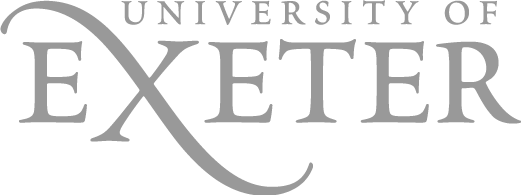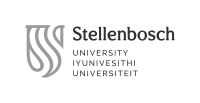F2412 Print Culture in the Digital Age
Professors
Schedule
Course description
In this class we will look at the way our literary heritage is preserved and transformed through its remediation in digital form, through an introduction to the “printing revolution” in the Renaissance and the way printed texts are now preserved and curated online. In the twenty-first century we are able to access high-quality digital facsimiles and transcriptions of early printed texts on paying websites such as Early English Books Online or on the open-access websites of libraries such the British Library, the Bibliothèque Nationale de France, the Beinecke Library at Yale and the Folger Shakespeare Library. Since Venice was one of the principal centres of the European printing trade in the fifteenth and sixteenth centuries, we will pay special attention to the development of printing in England and Italy, with a focus on Venice. The class will thus have two threads: we will study the material history of the printed book, as well as the social and cultural impact of print on literacy, reading practices and the spread of knowledge. At the same time we will consider the impact of the “digital revolution” on the way these printed texts are understood and accessed by scholars and students today.
We will compare the “remediation” (Bolter and Grusin 2000) of manuscript texts and oral culture as printed texts in the early modern period with the subsequent “remediation” of printed texts as digital media in the twenty-first century. Such a “re-purposing of old media in new media” (Kichuk 2007) may seek to reproduce the printed text as faithfully as possible, or it may “improve” on the original to provide easier access, include a search function and/or transcription, or comparison with multimedia files (e.g. of musical settings of songs). The funding required for such digital remediation projects must also be factored into our discussion, and in the class we will compare the economic model of a major commercial scholarly site, Early English Books Online, with smaller, more focused projects where the content (facsimiles and transcriptions) is almost entirely provided by volunteers. In comparing these models we will discuss the advantages and disadvantages of internet “crowd-sourcing” for such a project, and students will have the opportunity to contribute to a small online digitization project by transcribing and/or proofreading several pages of early modern English printed prose.
Proposed co-curricular activities: visit to the Tipoteca museum of the history of print in Treviso, with hands-on experience of letterpress printing;
Visit to the library of the Museo Correr / other Venice libraries to explore some early printed books;
Possibly a visit to a Venetian paper maker and/or bookbinder.
Learning outcomes
• Students will acquire an overview of the genres of printed texts circulating in the early modern period.
• Students will acquire an understanding of the practical skills involved in printing.
• Students will be able to assess the online remediations of early modern texts and the resources required to produce them.
• Students will be able to proofread and correct a short text coded in XML.
Syllabus
Week 1: Introduction. “The Printing Press as an Agent of Change”
Reading: Extracts from Elizabeth Eisenstein The Printing Press as an Agent of Change (1979).
Week 2: Examining the early printed book. Focus on: Shakespeare Shakespeare in Quarto (The British Library)
Lukas Erne, Extracts from Shakespeare as Literary Dramatist. 2nd ed. CUP, 2013.
Week 3: Paper and bookbinding
Anna Gialdini, “Bookbinders in the Early Venetian Book Trade” 2022.
Week 4: The title page, the printer’s mark and the distribution of printed books.
Focus on: Aldus Manutius
Online exhibition, Biblioteca Trivulziana di Milano
Week 5: The sound of print: broadside ballads and songs The English Broadside Ballad Archive
The Making of a Broadside Ballad
Christopher Marsh, “"The Sound of Print in Early Modern England: the Broadside Ballad as Song" in Crick and Walsham, eds, The Uses of Script and Print, 1300-1700 CUP, 2004.
Week 6: Images and illustration in the printed book: emblem books in Italy and England
Alciato at Glasgow
The English Emblem Book Project
Extracts from Michael Bath Speaking Pictures: English Emblem Books and Renaissance Culture, 1994.
Week 7: Digital Remediation of early modern printed texts Early English Books Online
Reading from: Jay David Bolter and Richard Grusin, Remediation: Understanding New Media. MIT, 2000.
Diane Kichuk, “Metamorphosis: Remediation in Early Modern English Books Online (EEBO).” Literary and Linguistic Computing 22.3 (2007).
Week 8: Transcription and proofreading in XML
“A gentle introduction to XML” The Text Encoding Initiative John Donne Society Digital Prose Project
Week 9: Crowdsourcing and the Digital Humanities
Tim Causer and Valerie Wallace, “Building A Volunteer Community: Results and Findings from Transcribe Bentham” Digital Humanities Quarterly 6: 2 (2012)
Week 10: The Print Revolution and the Digital Revolution
Extracts from Marshall McLuhan, The Gutenberg Galaxy: The Making of Typographic Man, (962.
Peng Hwa Ang and James Dewar, “The Cultural Consequences of Printing and the Internet”, 2007.
Week 11: Literature and the Digital Text
Reading from N. Katherine Hayles, Writing Machines.
Week 12: Conclusions: Print Revolution and the Digital Revolution
Evaluation
20% class participation. Students are encouraged to participate in both small-group discussion and interactive lectures.
20% presentation of an early modern printed book (oral presentation and WordPress blog entry)
20% practical digital editing assignment. Students will undertake the proofreading of several pages of an online edition of an early modern printed text coded in XML
40% final essay
Further reading
A Companion to Digital Literary Studies. Blackwell, 2008. Available online. The Cambridge History of the Book in Britain, CUP, 1999, especially volume 4. Jay David Bolter and Richard Grusin, Remediation: Understanding New Media,
MIT, 2000.
Julia Crick and Alexandra Walsham, eds The Uses of Script and Print, 1300-1700.
CUP, 2004
Digital Humanities Quarterly
Adam Fox, Oral and Literate Culture in England 1500-1700. OUP, 2001. Anna Gialdini, “Bookbinders in the Early Venetian Book Trade,” The Historical
Journal 65.4 (2022): 901-921
N. Katherine Hayles, Writing Machines. MIT, 2002.
Journal for Early Modern Studies, Special Issue: The Digital Turn, Volume 13, Number 4, Fall 2013.
Jerome McGann, ed. Online Humanities Scholarship: The Shape of Things to Come. 2010.
Marshall McLuhan, Understanding Media: The Extensions of Man. McGraw-Hill, 1964.
Susan Schreibman et al. eds, A New Companion to Digital Humanities. Wiley, 2016.
Peter L. Shillingsburg, From Gutenberg to Google: electronic representations of literary texts. CUP, 2006
Sarah Werner, Studying Early Modern Printed Books 1450–1800: A Practical Guide. Wiley, 2019. See also http://www.earlyprintedbooks.com
Last updated: February 29, 2024


















